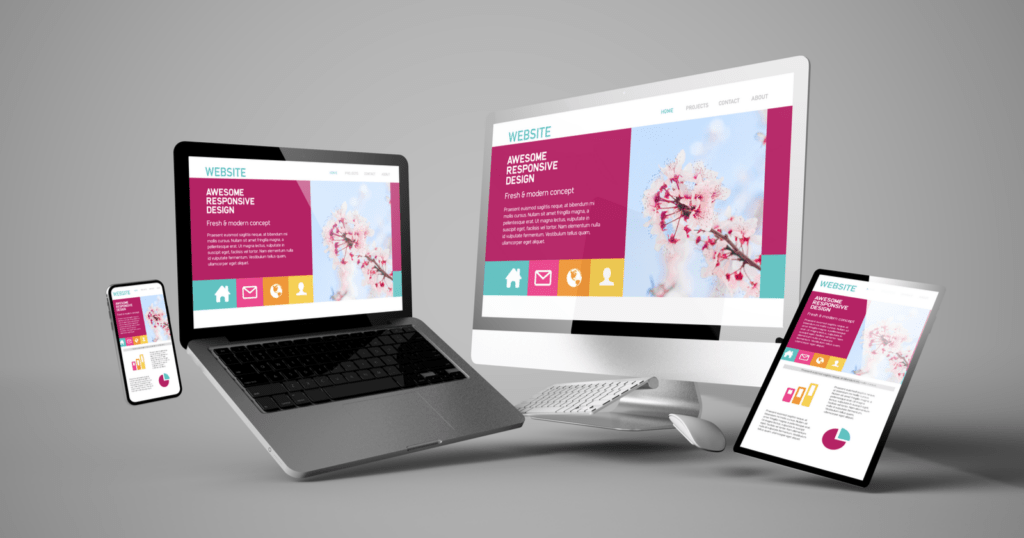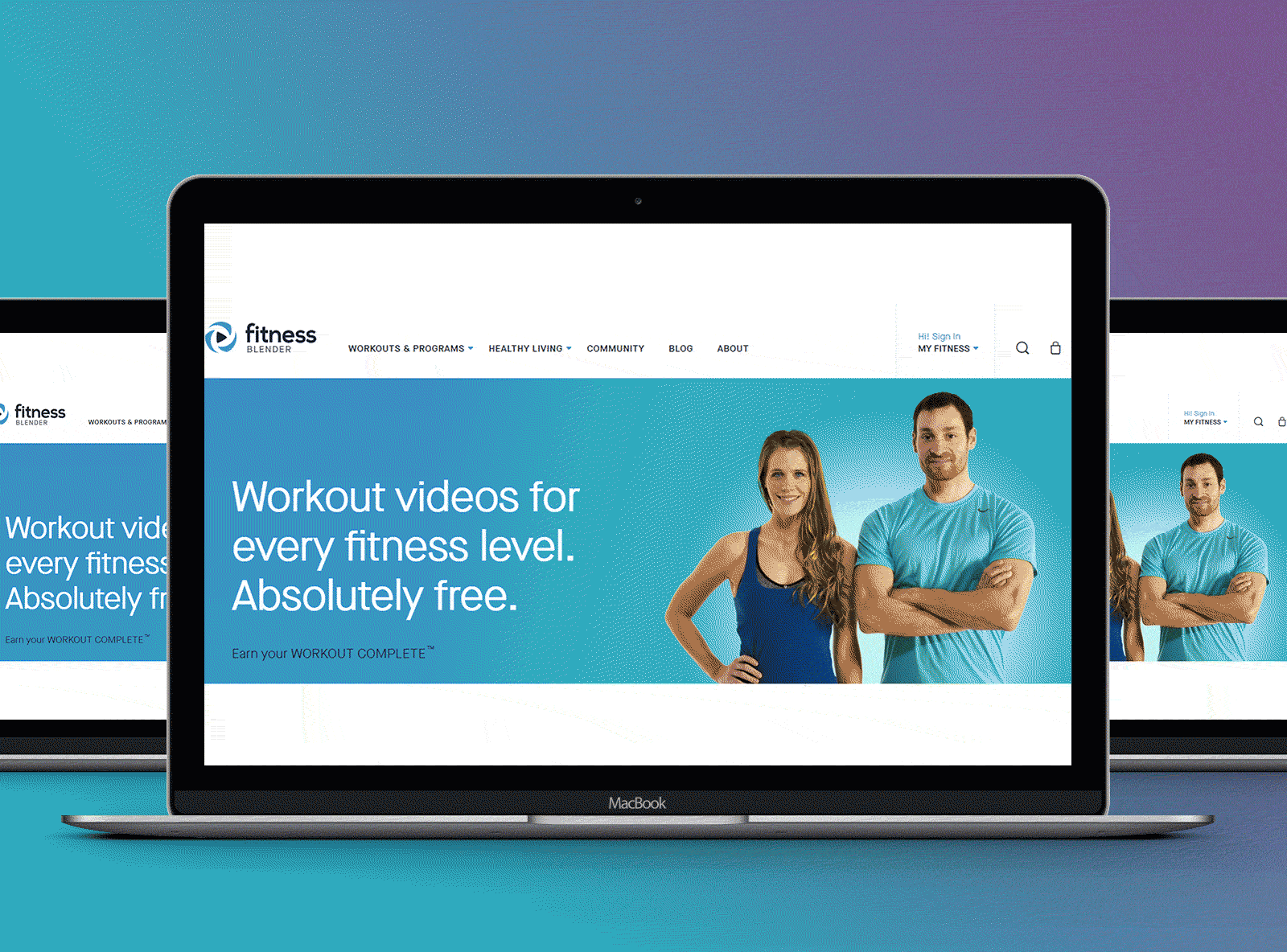Just How Website Design Impacts Consumer Engagement
The Power of User-Centered Site Style in Growing Your Online Audience
In a progressively affordable digital landscape, the importance of user-centered web site style can not be overemphasized. By focusing on the needs and behaviors of customers, organizations can create internet sites that not only attract however also engage a diverse audience. Effective design principles-- such as instinctive navigating and accessibility-- are crucial in fostering individual satisfaction and commitment. Understanding just how to take advantage of these principles properly elevates vital questions about execution and influence. What techniques can organizations embrace to guarantee their styles resonate with individuals and inevitably drive development?

Comprehending User-Centered Design
User-Centered Design (UCD) is a fundamental method to web site growth that focuses on the demands, choices, and habits of end customers throughout the layout procedure. This technique stresses recognizing users deeply-- via research study methods such as meetings, surveys, and functionality testing-- to produce an internet site that resonates with them. By incorporating customer responses at every phase, designers can make sure that the final item aligns very closely with individual assumptions.
UCD advertises iterative layout, where models are evaluated and refined based upon user communications and experiences. This cycle not just boosts functionality but also cultivates a feeling of ownership among individuals, as they feel their input is valued and impactful. Furthermore, UCD helps recognize prospective obstacles and pain factors in the customer trip, allowing designers to deal with these challenges proactively.
Inevitably, welcoming UCD causes web sites that are much more intuitive, appealing, and effective. By positioning users at the facility of the style process, organizations can develop digital experiences that not just attract however additionally keep their target audience, driving greater contentment and commitment. In an affordable on the internet landscape, this approach is crucial for accomplishing sustained success.
Secret Principles of Customer Experience
An effective user experience (UX) pivots on several key concepts that lead the layout process and boost interaction in between individuals and the web site. Firstly, use is critical; the internet site should be user-friendly, enabling individuals to navigate conveniently and find info quickly. This includes clear labeling and a rational framework that lessens cognitive lots.
Second of all, access plays a crucial function in ensuring that all users, no matter of their disabilities or capabilities, can effectively involve with the web site. Incorporating alt text for images, key-board navigating, and display visitor compatibility fosters inclusivity.
Consistency is an additional necessary concept. A natural style language, from color pattern to typography, aids customers build familiarity and trust fund with the website (Website Design). It additionally enhances brand identity
Moreover, feedback devices are crucial. Individuals ought to receive clear and instant responses to their actions, whether through aesthetic signs or verification messages, which enhances their confidence in navigating the site.
Last but not least, mobile responsiveness can not be forgotten. With an increasing number of individuals accessing internet sites via mobile phones, a design that adapts effortlessly to different screen sizes is critical for preserving a favorable individual experience.

Benefits for Online Involvement
Efficient online engagement provides countless benefits that can dramatically enhance an internet site's overall performance - Website Design. By cultivating purposeful interactions between users and the site, organizations can grow a dedicated audience that returns with consistency. Engaged customers are extra most likely to share content, thus increasing natural reach and attracting brand-new visitors via word-of-mouth promo
Boosted online involvement additionally brings about boosted customer satisfaction. When users discover an internet site that resonates with their demands, they are much more inclined to explore its offerings thoroughly, which can lead to higher conversion prices. Additionally, interesting web content urges individuals to spend even more time on the site, reducing bounce prices and positively affecting search engine ranking algorithms.
In addition, effective involvement gives indispensable understandings right into customer choices and habits (Website Resources Design). By examining user interactions, companies can customize their content and style strategies to satisfy the developing expectations of their audience. This flexible method not only boosts engagement yet also reinforces the brand's online reputation as receptive and user-centric
Inevitably, prioritizing on-line interaction through this hyperlink user-centered layout develops a thriving ecological community where both the company and the audience benefit, resulting in continual growth and success in the digital landscape.

Methods for Effective Style
To optimize the benefits of online interaction, using specific techniques in site style is paramount. User-friendly navigating is important; customers need to conveniently find information without complication. A well-structured menu, clear tags, and a logical pecking order boost the customer experience and reduce bounce rates.
2nd, responsive layout is essential in today's multi-device atmosphere. Ensuring that a website adjusts effortlessly to different screen sizes promotes availability, thereby suiting a wider audience. This flexibility go to my site not only enhances customer contentment yet additionally favorably impacts online search engine positions.
Third, the usage of aesthetic power structure overviews customers' focus to crucial components, such as contact us to activity (CTAs) Utilizing contrasting colors, varying font sizes, and critical spacing can effectively direct users towards wanted actions, promoting higher interaction.
Furthermore, executing constant branding across all web pages develops trust and acknowledgment. A cohesive shade plan, typography, and images reinforce brand name identity and develop a professional look.
Last but not least, enhancing loading rates is vital. Customers are less likely to engage with a slow-loading site, making performance optimization a crucial element of reliable style. By incorporating these methods, site designers can improve customer experience and eventually grow their online target market.
Real-World Success Stories
Success tales in user-centered web site layout illustrate the concrete advantages of focusing on individual experience. One notable instance is the redesign of the website for the not-for-profit organization, Charity: Water. By incorporating customer comments, the company structured navigating and emphasized narration via impactful visuals. Therefore, they experienced a 250% rise in online donations, showing just how an instinctive layout can drive user involvement and assistance.
An additional compelling situation is that of Airbnb, which used user-centered layout concepts to boost their booking procedure. By simplifying the user trip and integrating tailored suggestions, they significantly lowered website abandonment prices. This emphasis on individual experience added to an earnings growth of over 70% in a single year, emphasizing the connection in between properly designed interfaces and monetary success.
Furthermore, the ecommerce giant, ASOS, executed user testing to refine their mobile app. By attending to individual discomfort points, they attained a remarkable 30% increase in mobile sales. These examples highlight that buying user-centered layout not just enhances user satisfaction but likewise drives concrete business outcomes, enhancing the vital duty of customer experience in attaining on-line growth.
Final Thought
Finally, user-centered internet site style acts as a vital approach for improving on the internet audience engagement. By focusing on user demands and preferences, businesses can produce available and instinctive digital experiences that foster commitment and drive conversions. The integration of customer responses throughout the style procedure not only minimizes bounce prices yet additionally encourages exploration. Inevitably, embracing effective user-centered layout principles can dramatically contribute to a company's success in a competitive digital landscape.
User-Centered Style (UCD) is a fundamental method to site advancement that prioritizes the needs, preferences, and actions of end users throughout the design procedure. By including customer responses at every phase, designers can ensure that the last product aligns carefully with user assumptions.
An effective individual experience (UX) hinges on several crucial concepts that lead the layout procedure and enhance interaction between customers and the website.Success stories in user-centered site style illustrate the tangible benefits of focusing on user experience. These examples highlight that investing in user-centered style not just improves individual contentment but additionally drives tangible business results, reinforcing the important role of user experience in achieving on the internet growth.